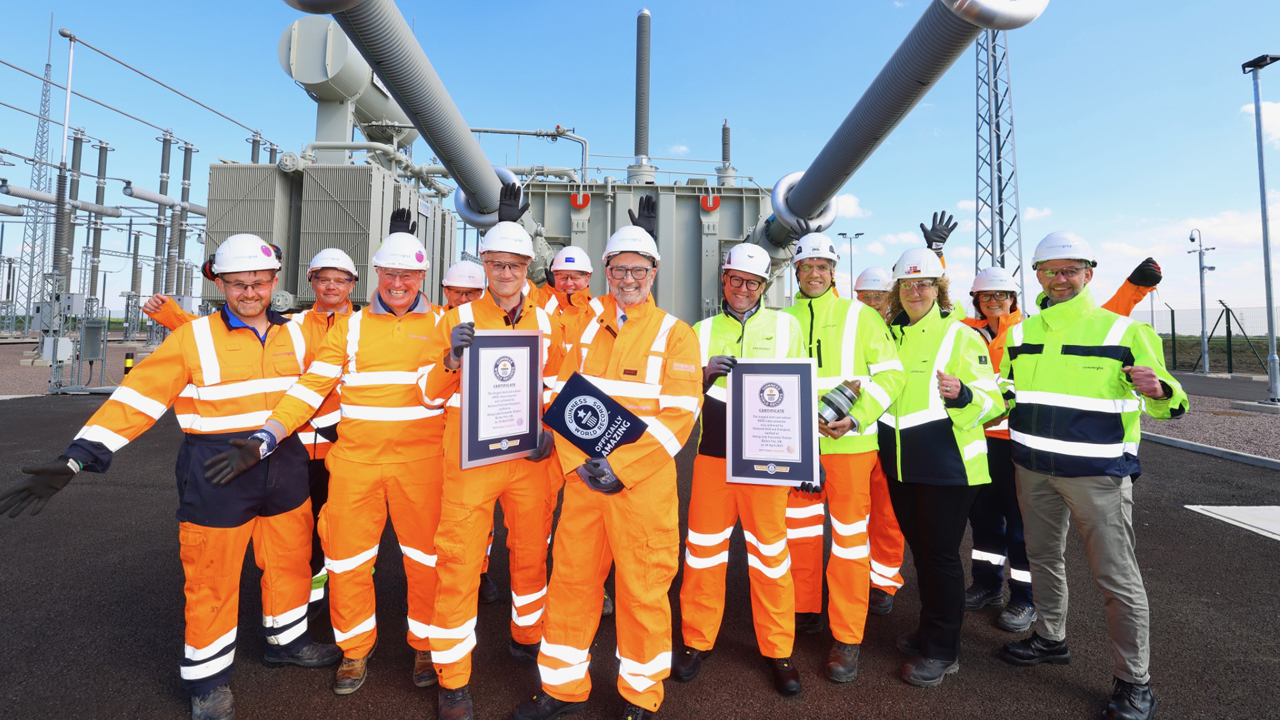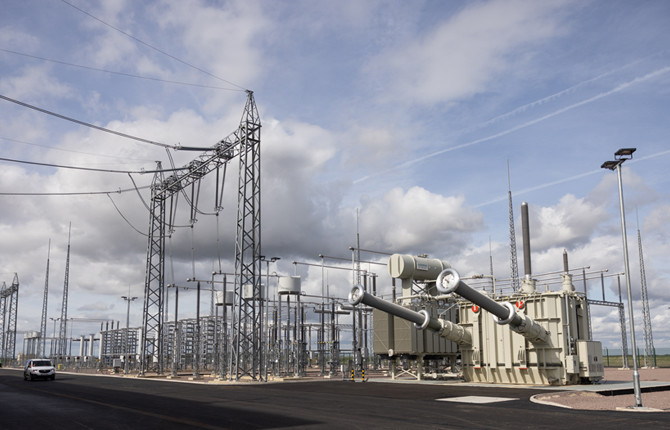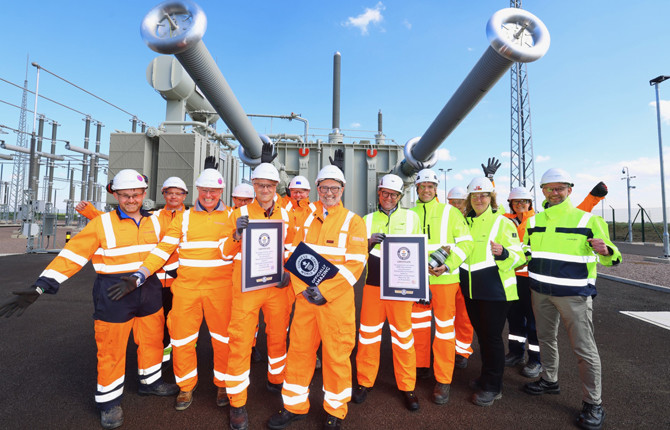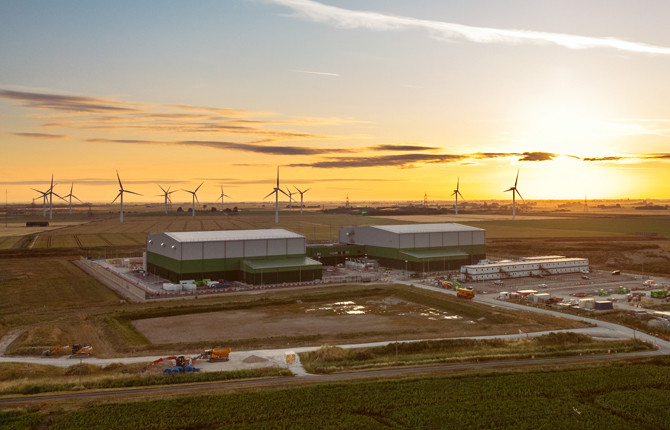
National Grid’s Viking Link interconnector recognised by GUINNESS WORLD RECORDS™
The Viking Link interconnector between the UK and Denmark has been recognised by GUINNESS WORLD RECORDS™.
Record-breaking link has been named the longest land subsea HVDC interconnector.
Official adjudicator visited the project’s Lincolnshire converter station to present the title.
National Grid’s Viking Link has been awarded a prestigious title by GUINNESS WORLD RECORDS™.
The UK’s newest electricity interconnector, which stretches for 757km to join rural Lincolnshire with Revsing in Denmark, has been named as the longest land and subsea HVDC interconnector.
Members of the project team were joined by a GUINNESS WORLD RECORDS™ adjudicator at the UK converter site in Bicker Fen on Tuesday 30 April to officially receive the title and certificates.
Record-breaking Viking Link is jointly owned and operated by National Grid and Danish system operator Energinet and became operational on 29 December. So far it has transported more than 1,800GWh of power between the two countries – a figure that will only increase over time.
Construction on the link began in 2019 and a bespoke vessel, the Leonardo De Vinci, was commissioned to install the cable, which weighs 40kg per metre and stretches further across land and sea than any other of its kind.
More than four million working hours were spent bringing the project to life – with many of the team working on the link since the beginning.
National Grid Construction Director Gareth Burden said: "This is a huge achievement for the whole team and we are thrilled to be recognised by GUINNESS WORLD RECORDS™.
"Viking Link is an incredible feat of engineering, bringing cleaner, greener and more affordable energy to consumers as well as increasing energy security for both countries. In its first year alone, Viking Link is expected to save 600,000 tonnes of carbon emissions – equal to taking 280,000 cars off UK roads and is already playing a vital role in the green energy transition."
Viking Link is National Grid’s sixth interconnector and the UK’s ninth. The company also has links to France, Belgium, The Netherlands and Norway, with the fleet expected to help the UK avoid around 100 million tonnes of carbon emissions by 2030.
As well as huge environmental benefits, the project, which cost a total of £1.7 billion, will bring over £500 million of savings for UK consumers in its first decade of operations while also providing enough power for up to 2.5 million households.
Find out more about National Grid's Interconnectors, how they work and their role in decarbonising the energy system.






